I received this question:
For the funeral of a cleric, I know that the body is dressed in the liturgical vesture proper to their order and rank. Does this include a particular color for the vestments or is it what ever color is desired? I can’t seem to find anything on this on the web except for the Pope who gets red vestments.)
My understanding is that clerics ought to be vested in the sacral garments that distinguishes their grade.
So, a priest ought to be dress in a chasuble. I believe it ought to be violet, but I am sure that this is prescribed anywhere.
I have a Roman chasuble, a pianeta a priest in Italy gave me. It had been left in the sun for a long time, folded, so the back is faded in part and can’t be used for Mass. Perfect for a coffin!
I know that some priests are in white, but I don’t think that is the traditional color.
Also, remember that his body must be turned the other way: head toward the altar.

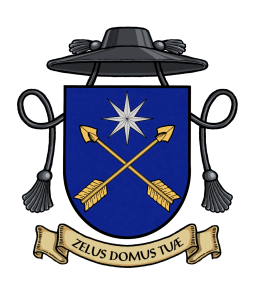




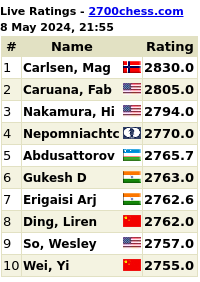


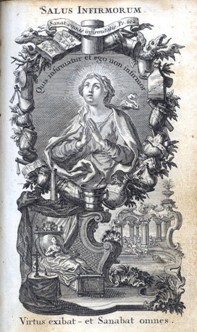
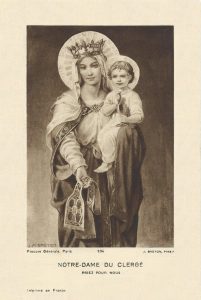





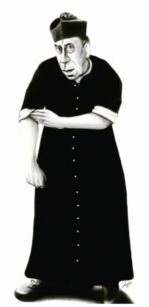



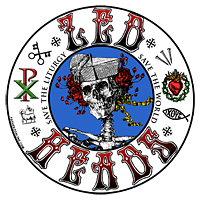










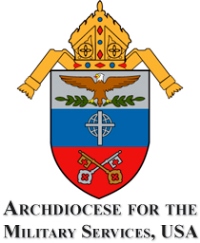

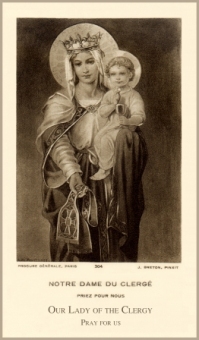
Violet is certainly the traditional colour. I’ve always wondered why not black, but violet it is.
As a funeral director my experience has been to vest the cleric as if he was vested for Mass according to his rank and in violet (some dioceses have a specific design for their concelebrating priests and have had to use those in a few cases.) In the case of a bishop I have always used a pontifical dalmatic as well. With a Cardinal I had his galero on a table by him and then it was suspended from the cathedral ceiling after his entombment.
It’s in the Rituale Romanum.
12. A deceased priest or any cleric should, if possible, be clothed in his accustomed apparel, including the cassock, and over this the sacerdotal or clerical vestment proper to his rank; and everyone should wear the tonsure and biretta.
13. A priest especially, in addition to the cassock, should be vested in amice, alb, cincture, maniple, stole, and purple chasuble.
14. A deacon should be vested in amice, alb, cincture, maniple, stole (worn over the left shoulder and fastened below the right armpit), and purple dalmatic.
15. A subdeacon should be vested in amice, alb, cincture, maniple, and purple tunic.
16. All other clerics in lesser orders ought to be vested in surplice worn over the cassock.
Father Z,
The Ceremonial of Bishops has a short paragraph on the orientation of the body for a funeral:
823. It is fitting that the custom be continued of placing the coffin in the position that the deceased held in the liturgical assembly, so that the body of an ordained minister lies facing th assembly and the body of a layperson lies facing the altar.
Personally I don’t like the wording or the rubric because it seem to assume that the priest faces the people for Mass, which historically hasn’t been the case.
How salubrious these ruminations upon death.
Thank you for the pleasure – so very Catholic.
Go Fr Z!
Kevin, Sac.
I, too, a funeral director have vested priests and sisters according to prescribed ritual, although it has been my experience that the diocesan priests have come in and vested the body for a priest.
Yes, the head of the priest is to be toward the people, I am sure, as in the final blessing of the OF, he does turn to face the people and impart the blessing.
The above quotes from the Ritual and Ceremonial… are these from the Ordinary or Extraordinary Form?
That must be the traditional Ritual since it mentions the maniple.
At all but one of the priests’ funerals I have attended in the last 30 years, the vestment color has been white. The last two priests I personally buried and dressed were laid out in white vestments with cassock and birretta. One of the priests requested that the maniturgium be buried with him in the casket as his mother had already died. Traditionally, the maniturgium is placed on the hands of the mother of a priest.
The quote from the Ceremonial is for the OF.
The quote from the Rituale seems vague on one point. I belive that a man in any Order below priest faces the altar like a layman since only a priest and a bishop have a flock which they face when they lie dead.
Here is an example of a Bishop laid out on his lit de mort. This is a photograph of Bishop Robert Browne (1844-1935) of Cloyne in Ireland. The photograph, int he Francis Browne Collection, was taken in March 1935.
As you can see, the bishop is laid out in purple vestments with a dalmatic and purple gloves and white mitre.
http://www.fatherbrowne.com/IMAGES/IrishLife/p%20dead%20bishop%201935.jpg
The first paragraph of Chapter 10 of Philip Goddard, “The Plain Man’s Guide to the Traditional Roman Rite of Holy Mass” (on line under Resources at http://www.latin-mass-society.org) reads as follows:
“The text of the Mass of the Dead in the Old Roman Rite is one of the greatest compositions of the Middle Ages. It is a sustained, eloquent and impassioned plea for mercy for the souls of the departed, expressed in language of a richness and intensity unparalleled even in the old Roman liturgy. ….. It’s suppression by the reformers of the post-Vatican II era was an act of vandalism comparable to the demolition of Chartres Cathedral or the obliteration of Michelangelo’s ‘Last Judgement’. Fortunately, however, a liturgical rite cannot be destroyed in the same way as a building or a painting, and the Old Requiem Rite is still celebrated in this country [England] from time to time since every Catholic in England and Wales has the right to chose it for his funeral.
QUESTION: Is this really so? Do English and Welsh Catholics generally know of this right? How often do they avail themselves of it?
Realizing that cardinalitial funerals represent a very small fraction of this…how often is the traditional raising-of-the-galerum-rubrum still performed?
I know the Popes stopped handing the galeri out officially in 1967 and those that are obtained now are obtained privately,but how many do this?
I know that when Cardinal Bernardin died, his galero was raised at his Month’s Mind.
Five galeros can be seen hanging in the sanctuary of Holy Name Cathedral in Chicago.
An irreverent tradition holds that when a deceased cardinal’s galero deteriorates to the extent it falls to the floor, that means its wearer has finally been released from Purgatory.
Mr. Edwards: the “right” referred to arises from a resolution of the Bishop’s Conference of England and Wales in the 1970s. As you may know, there was a particular indult for those countries to celebrate the traditional liturgy, under many restrctions, which was granted at the request of Cardinal Heenan in 1971. After this, the Bishops agreed that they would permit the traditional rite to be used at the funerals of those of the faithful who requested it.
I’m not sure that this was ever widely known, except among people who habitually attended the traditional liturgy, or were actively involved with it in some way. It’s also not clear that it was ever a true legal right, but it was the official policy of the hierarchy. That’s not to say that it was always honoured at the parochial level, or even that a priest could be found to officiate in the old rite, but an indult was supposed to be freely granted for traditional funerals.
Traditionally, Passionist priests are not laid out in Mass vestments, but are buried in their religious habit with a purple stole (usually the confessional stole) worn over the habit and the mission crucifix (the one worn when preaching) held in their hands. I think there are other religious communities with similar customs, as religious priests do not usually have their own Mass vestments.
O’Rourke, the quote from the Rituale is transparent and clear. There is nothing vague. And there is no indication about how to place the coffin, just on how to dress the cleric, which is the subject of this post, I believe.
When Cardinal Basil Hume (Westminster) died, they made for him his first galero, rather badly, in cherry-red shiny material, and hung that over his tomb.
Cerimoniere: Regarding the right to be buried using the traditional liturgy: All members of England’s Latin Mass Society receive, on joining, a membership card (mine’s red in colour but they may have changed it recently) stating this right on the reverse side. It was conceded by the English and Welsh hierarchy in 1974. So in theory, members knew/know about it, as do their families, according to the extent to which people pass this information on. In practice, of course, this is another matter – you refer to the willingness of clergy to permit this Mass. In my diocese (Salford) in the 1970’s, the Ordinary, Bishop Thomas Holland, was apparently willing to permit pre-Vatican II liturgies at the drop of a hat – for funerals, wedding anniversaries, etc. There were also various priests who were willing to oblige in offering the older liturgy.
Fr Z,
I’m about to write some directions for a Last Will and Testament about my own funeral should that be provided for me. I think it’s a good idea that all priests do this. I must be feeling really old at the moment.
Anyway, I don’t understand the head toward the altar bit. Does that mean that the head is closest to the altar, or does that mean that if the corpse were to all of a sudden open the casket and sit up, he would then be facing the altar?
Sorry to phrase it that way, but I want to be clear.
Cheers!